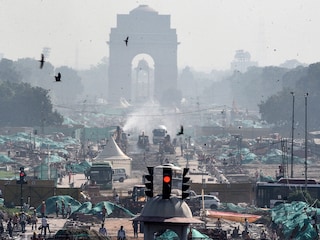Why the image building operation is necessary for India
In the modern world of optics, a portrayal of an image matters the most. Building a favourable opinion of India and its people as a force to reckon with has its benefits


When German Ambassador to India, Walter J. Lindner, said he expected to find every Indian sitting deep in meditation under a Banyan tree, one can well imagine the image that India radiated to the West.
Back in 2016, in one of my sessions at IIM-B, a senior bureaucrat who was posted at the Ministry of External Affairs, Government of India explained to me about a massive mirror on the premises of the Ministry. As soon as staff and officers enter, the mirror is there to remind them to give a favourable impression of India to the world and to reflect back upon what they are seeing.
We were having this conversation after my presentation of a media content analysis of human trafficking coverage study. One of the two primary goals that the United States of America quite clearly worked towards, while showcasing itself as a superpower, was to build great cities and a greater naval presence. They realised it conveyed powerful non-verbal signals, having observed the cities and naval bases of the erstwhile USSR that exuded the power of the state. The fact of the matter is that the US is where the most heinous crime in the world—human trafficking—occurs at its peak. Yet, the US government every year publishes a Trafficking in Persons Report that it uses to monitor and combat trafficking in developing nations across the globe. The irony of the situation is stark, yet a poignant reminder of how image and the portrayal of an image matter the most.
In the last few months, the Indian government has covertly launched “Operation Image Building". The missiles have taken off and you can see flares on all their social media platforms. When Columbia’s minister is visiting Delhi, pictures are posted of the delegation meeting at Hyderabad House with the table set to perfection—akin to a patisserie in Paris. The interiors of Hyderabad House, which belongs to the Ministry of External Affairs, has undergone a splendid transformation (see tweet below)
When I met Hafeez Contractor, who designed the outlandish asymmetric buildings and spaces for Infosys (in the Bengaluru and Mysuru facilities) in 2006, he had explained that the company wanted to showcase itself as a pathbreaker in the IT space in corporate India which its spaces and campuses had to espouse.
IIM-B’s campus was recently amongst the top 25 most significant works of Post-War architects in the world. When asked what his inspiration was while he designed the campus, renowned architect Dr B V Doshi said, “We wanted something that we find in Indian temples—places depicting eternal values and culture. That added with the image of hope for change as well as dynamism. That kind of imagery gives us the optimism and courage to face life along with its various challenges."
Whether “Operation Image Building" will hit the target in building a favourable opinion of India and its people as a force to reckon with remains to be seen, but the work in that direction seems to convey quiet confidence of self-assurance. Deepti Ganapathy is a member of the faculty at the Indian Institute of Management-Bangalore
First Published: Oct 28, 2021, 14:04
Subscribe Now